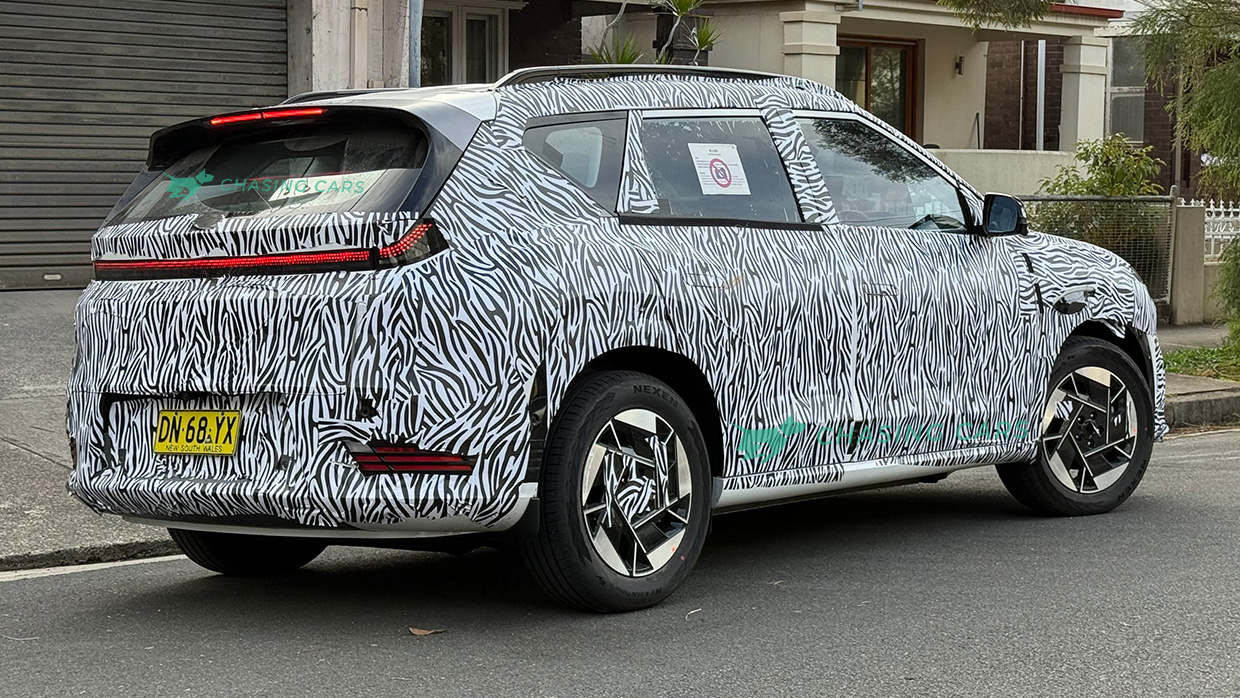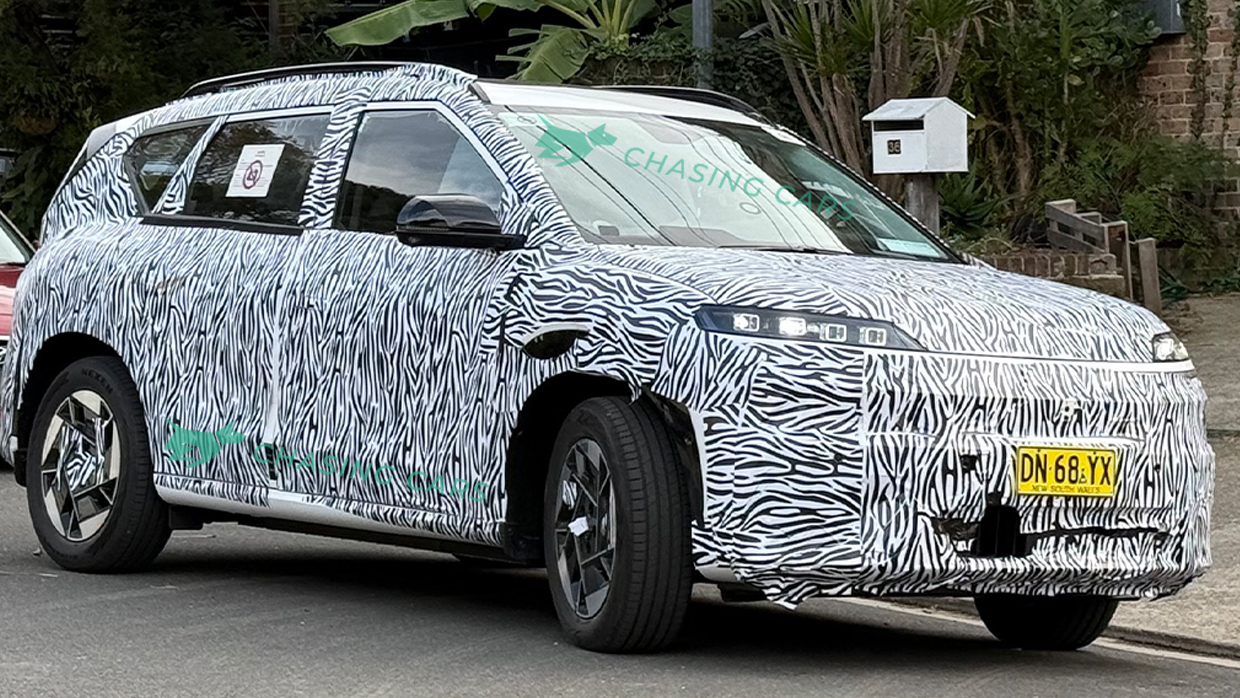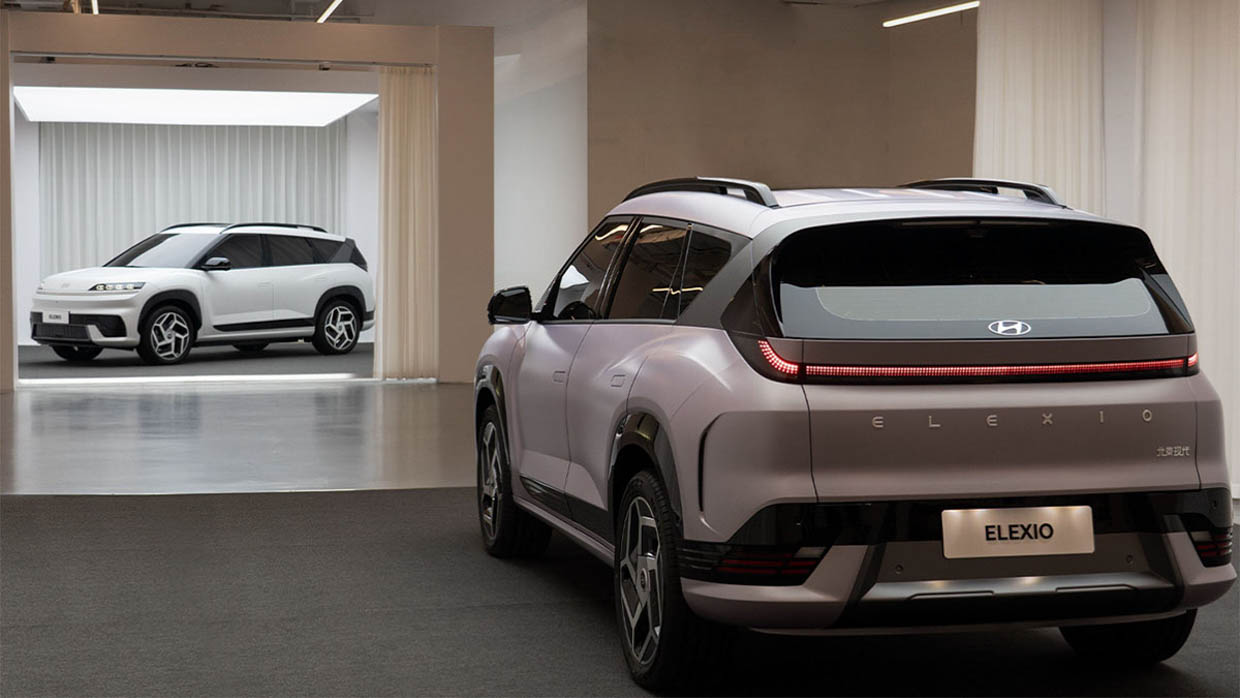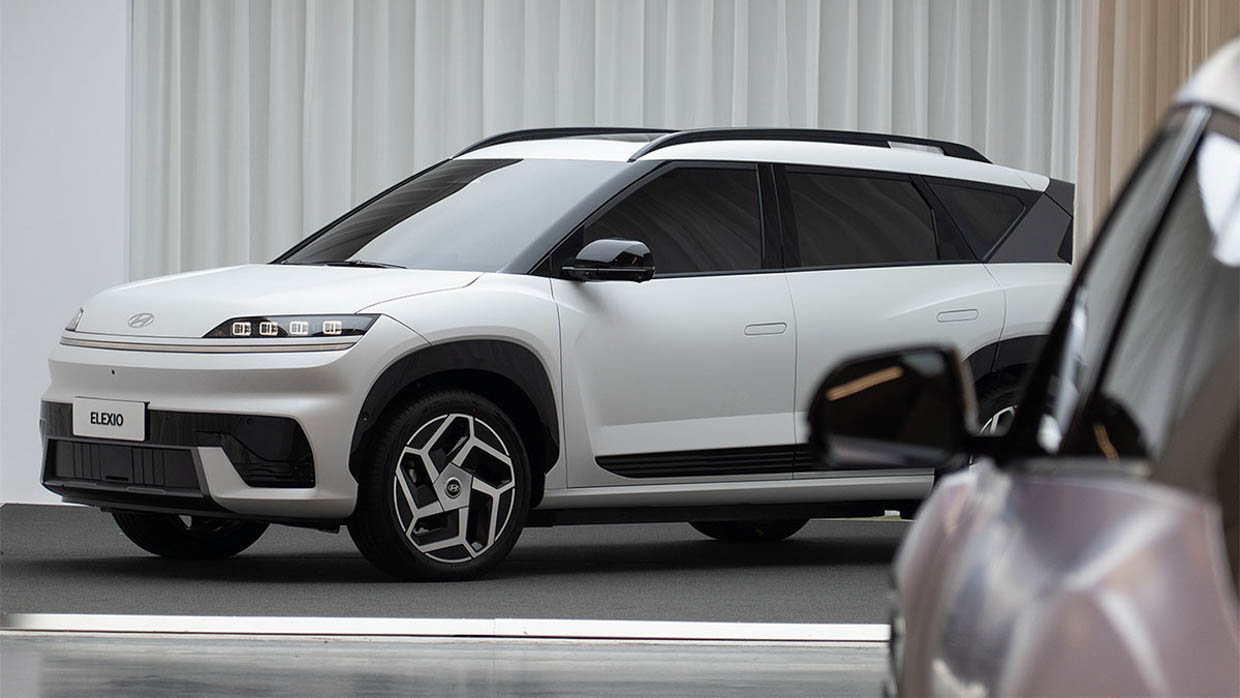-
Car Reviews
- All reviews
- Midsize SUVs
- Small cars
- Utes
- Small SUVs
- Large SUVs
- Large cars
- Sports SUVs
- Sports cars
- Vans
Latest reviews
- Car News
-
Car Comparisons
Latest comparisons
- Chasing Deals
A camouflaged mid-size SUV spotted testing could be Hyundai Ioniq 4 — and the next big thing from Korea
While cousin-brand Kia has been on EV offensive in Australia, Hyundai’s Ioniq range is yet to expand beyond 5 SUV and 6 sedan. The delayed Ioniq 9 is due this year, but a premium large SUV isn’t a big volume seller — and Hyundai could do with a sales boost in Oz.
Chasing Cars spotted a camouflaged prototype on the streets of Sydney’s Inner West that could be the forthcoming ‘Ioniq 4’ stand-in, known as the Elexio in China. It is likely to be an affordable mid-size electric SUVs to rival the Kia EV5 and Tesla Model Y.
Correction: This story previously named the spotted vehicle as the Ioniq 4. The pictured vehicle appears to be a version of the Chinese-market Elexio not-yet confirmed — but likely — for Australia. The article has been updated for accuracy.
Hyundai Australia has not confirmed this vehicle will come to our market, however local testing of a prototype vehicle certainly suggests it is under consideration. Reports
The vehicle spied was wearing Zebra-like black and white camouflage on most of the body and centre caps of the wheels.
It has a long wheelbase with short overhangs, and a high roof-line — almost like a mini people mover. Sharp headlights with four cubic elements are all that can be seen at the front, while at the rear there is a full-width light bar that wraps up to the tailgate glass.
A high-mount LED taillight and low-mount reflectors are prominent, as are the broad wheel arches. It almost looks like an overgrown Inster electric car fused with a second-gen Kia Niro.
We did not get a clear look at the interior.
Beyond that, the car has been registered in NSW since May, with the model name listed as ‘OE EV’ — this is in-keeping with the brands’ other EVs like Ioniq 5 (CE), Ioniq 6 (NE) and Ioniq 9 (ME).
The plate also reveals this car’s weight, at 1908kg, which is just 2kg less than a base model Kia EV5 air.
In June, Hyundai’s Beijing arm showed off the Elexio as a car built for that market first — but exports are likely. It is a co-development with Beijing Hyundai and Chinese carmaker BAIC.
Few details were revealed beyond the images shown here. Filings with China’s transport regulator reveal fresh details, including availability of AWD and circa-700km driving range.
It is not clear if the car uses Hyundai’s E-GMP platform, though that naming seems to be more fluid in its definition than, for example, Volkswagen’s MEB. The Kia EV5 professes to use E-GMP, but its ‘N3 eK’ variation of the platform runs a 400– rather than 800-volt system along with other differences.
If the vehicle spotted is based on the same underpinnings as the EV5 (not uncommon — look at EV6 and Ioniq 5) then Hyundai might smartly be getting in early to hone its new model on Australian roads.
The EV5 has not been received as well as Kia’s other electric cars, with Chasing Cars finding shortcomings in ride, handling and efficiency. Our roads are famously bad, so it may be the case Hyundai is tuning early to ensure its next electric SUV is well received.
READ MORE: Kia EV5 GT-Line review
In sales terms, Hyundai was beaten by Kia for the first time in 2022, and has struggled to get back on top since then. This year is looking better, with Hyundai up 3.4 percent to the end of May.
New models, especially ones that offer strong value, will be important in the next 12-18 months. If Hyundai’s able to bring a new, sub-Ioniq 5 EV in the Elexio at close to $50,000, it could snipe sales from the Kia EV5, Tesla Model Y, Xpeng G6, and host of other rivals.
Latest news
About Chasing cars
Chasing Cars reviews are 100% independent.
Because we are powered by Budget Direct Insurance, we don’t receive advertising or sales revenue from car manufacturers.
We’re truly independent – giving you Australia’s best car reviews.



